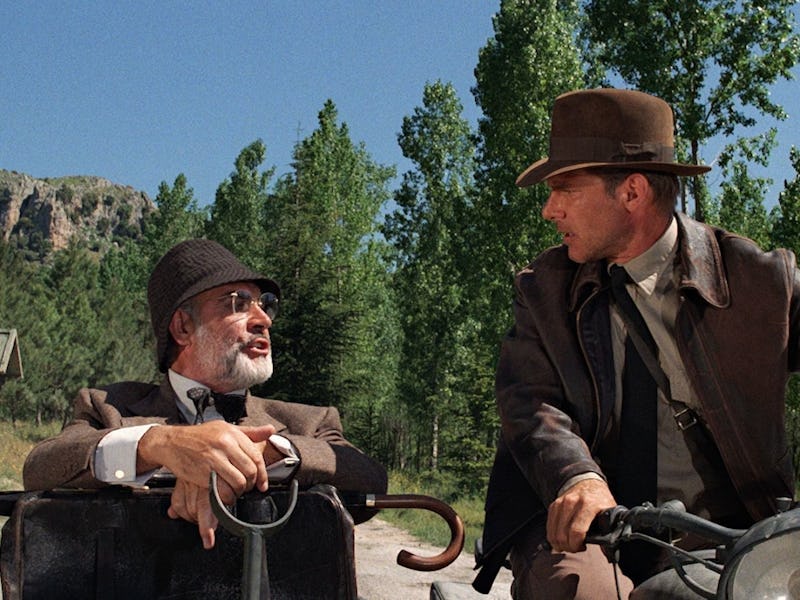The Best Indiana Jones Movie is the Perfect Example of How to Expand a Franchise
It runs in the family.

After five movies spread out over more than 40 years, it seems we’re done with Harrison Ford’s version of Indiana Jones for good. What started in 1981 as a riff on the serials Steven Spielberg and George Lucas loved so much as kids became a cultural phenomenon chronicling Indy’s adventures from the 1930s through to the ‘60s.
While every entry has its merits (yes, even the one you hate), it’s Indiana Jones and the Last Crusade that represents the best of what the franchise has to offer. It’s not necessarily the best movie of the bunch; Raiders of the Lost Ark offers outstanding adventure storytelling, and is one of Spielberg’s best directorial efforts. The Last Crusade, though, has much of Raiders’ charm but a little less self-seriousness, making it the platonic ideal of an Indy movie.
Last Crusade, which follows Indy as he’s recruited to track down both the Holy Grail and his father, plays as a two-handed road movie, and Sean Connery proves to be Ford’s perfect foil. Connery could have easily played some version of Indiana Jones 20 years before Ford got the part, but while his Henry Jones Sr. is just as brilliant as his son, he has none of his knack for adventure. Adding Connery to the mix changes a straightforward action adventure into something closer to slapstick comedy. Together, father and son manage to set the room they’re being held prisoner in on fire, shoot down their own plane, and bicker throughout the entire film.
While they’re searching for an important historical artifact with mystic powers, just like in every Indy movie, the quest isn’t taken too seriously. The film’s primary goal is to leave audiences tickled by the Jones family’s antics, and The Last Crusade’s script, written by Jeffrey Boam, deserves credit for its ability to manage the tonal shifts the movie requires.
It’s the sheer joy on display here that future sequels never fully captured. It’s as if Spielberg and his collaborators bottled the energy from the famous Raiders scene where Indy just shoots the talented swordsman rather than fighting him and turned it into an entire movie. Every franchise has fans who insist that, regardless of the tone of the films they’re defending, the series itself is important and must be taken seriously. That’s why The Last Crusade feels so refreshing: Spielberg closes off his original trilogy with an installment that feels like a sendup of the franchise he just built.
As a stuffy academic, Connery offers the perfect foil to Ford.
In Raiders, the Nazis are over-the-top villains, but there’s real menace to Ronald Lacey’s Arnold Toht. Temple of Doom takes things further, creating a cartoonish but grotesque reality in which children work as slave laborers and our hero can literally have his heart ripped from his chest. But in The Last Crusade, Indy infiltrates a Nazi castle with nothing but a slapdash Scottish accent, and when he meets Hitler it’s played as a punchline.
While the prior two installments seemed interested in giving their drama and action a bit of weight, The Last Crusade feels lighter than air. Its emotional beats come from the relationship between father and son, and from the sense that in finding the Grail, they’ve finally come to a better understanding of each other.
Raiders of the Lost Ark is a weightier and perhaps better movie. But if you’re going to turn on an Indiana Jones film to have a good time, you should turn to The Last Crusade. Rather than trying to outdo Raiders, it tells a similar story with a different tone. The result is a perfect trilogy capper, and the platonic ideal of a franchise installment.